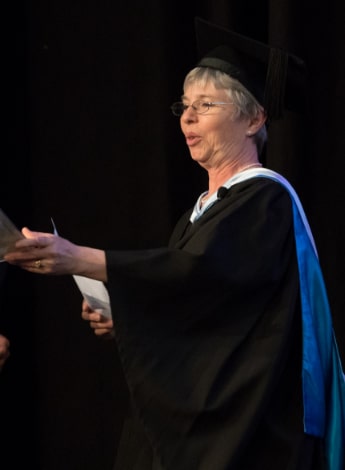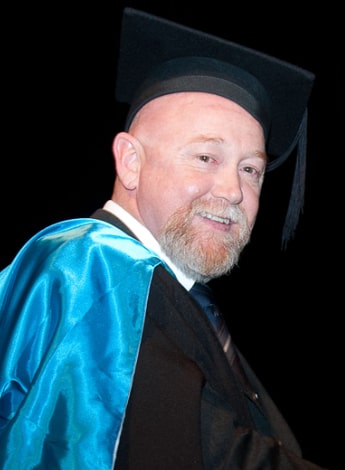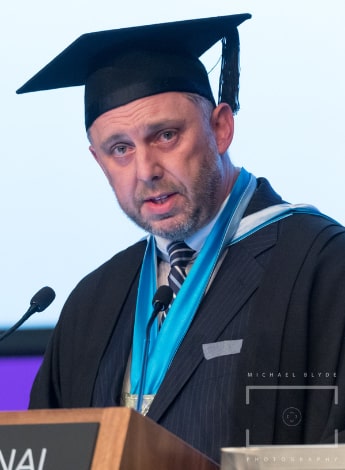
Australian College of Physiotherapists: a concise history

Part 3: In this third instalment of the history of the Australian College of Physiotherapists, College co-Vice President Professor Barby Singer FACP continues the story of further development during the period from 2010 to the present day.
The Australian College of Physiotherapists currently provides two pathways to Fellowship—Original Contribution (Research pathway) and Specialisation (Clinical pathway).
The previous two articles by Emeritus Professor Gwendolen Jull and Associate Professor Patricia Trott have provided an historical perspective from the time of the inauguration of the College in 1971 to the end of the ‘interim period’, when suitably qualified physiotherapists could apply directly to sit the Specialisation examinations and 100 new Specialists joined the ranks of Fellow of the Australian College of Physiotherapists.
Inevitably, the failure rate of the Specialisation examinations during the interim period was fairly high, as candidates presented with varying levels of preparation and many had not sat a clinical exam since their undergraduate years.
Significant work has been put into the refinement of clinical examination processes and the College is proud of its current pass rates (85 per cent for Specialisation and over 90 per cent for Fellowship by Original Contribution).
An unsuccessful application to the Physiotherapy Council of Australia for accreditation of the specialisation training program (STP) in 2010 identified a number of areas for improvement in governance and processes.
Around the same time, the APA and the College commenced discussions related to the establishment of an APA Physiotherapy Career Pathway that would engage all graduate physiotherapists in a lifelong learning journey.
This pathway would be flexible and agile to accommodate member needs, while allowing individuals to become credentialed at different milestones from ‘Foundation’ through to ‘Expert’ using a structured framework.
A major internal review of the College in 2018 saw the establishment of six standing committees to oversee the implementation of the APA Physiotherapy Career Pathway and to put in place new structures and relevant policies and procedures.
These standing committees, each led by Fellows of the College, are working hard to bring to fruition the ideals embedded in the Career Pathway framework.

Barby Singer presents a certificate of graduation at the 2017 College graduation ceremony.
More than 70 APA members, representing the spectrum of career stages from relatively recent graduate to Specialist, are assisting in this work in close collaboration with APA staff—James Fitzpatrick (APA General Manager, Education), Jen Thomson (Manager, College Council and Committees), Judy Orford (Manager, Specialisation and Fellowship Programs) and Anita Kosterlitz (Manager, Curriculum Design)—and guided by the Board of Directors.
The APA Physiotherapy Career Pathway Competence Framework is based on the CanMEDS framework.
It identifies key competencies to be achieved in seven role domains: physiotherapy practitioner, communicator, collaborator, health advocate, professional, leader and scholar.
The APA Physiotherapy Career Pathway needs to be able to accommodate the changing face of physiotherapy practice over the next decade.
To this end, a major review of the STP began in 2019, led by Associate Professor Louisa Remedios, with the intention to propose models for the redesign of the STP to increase its scalability, flexibility, sustainability and equity of access.
The project included a literature review, exploration of other training models in related health professions, interviews with a range of stakeholders and mapping of the STP to the Competence Framework.
A major finding in this review was that much of the success of the current STP was the result of the outstanding contribution of many Specialists who generously give their expertise and time in support of registrars in the program.
This ‘community of learning’ is a highly valued aspect of the current STP.
Interviewees noted that some structured expert mentorship will be critical to maintain in any new STP model.
There was an acceptance that skill in mentoring others, and a willingness to be mentored, were core components of the Career Pathway, as well as a recognition of a need for structured training and support for mentors to enable them to take on these roles.

Graduates from the 2011 College graduation ceremony.
A review of the Original Contribution pathway followed the development of a Research Titling pathway in 2020 to recognise the achievement of physiotherapists who have additional qualifications in the research arena.
There are currently nine physiotherapy researchers undergoing this pathway to Fellowship.
Their progress is overseen by an individually appointed supervisor and a small working party of Fellows by Original Contribution, who assess applications, receive regular progress reports and appoint examiners.
In addition, a Leadership pathway to Fellowship is currently under development, based on the APA Competence Framework.
This pathway is expected to be ready for pilot in 2022.
The two-year STP has provided 49 new Specialists in the past decade.
Over the same period, 10 physiotherapists have been awarded Fellowship by Original Contribution, bringing the total number of Fellows of the Australian College of Physiotherapists to 185 in 2021, 19 by Original Contribution.
Currently there are 25 registrars in the STP (four Pain; five Women’s, Men’s and Pelvic Health; six Musculoskeletal; eight Sports and Exercise; and two Neurology).
Three registrars are currently undergoing a period of deferral and an additional 11 physiotherapists who have completed the STP are preparing to sit final Specialisation exams in November 2021.
A working group of 12 discipline-specific Censors, ably led by Chief Censor Ruth Dentice and Deputy Chief Censor Andrew Connell, and supported by the indomitable Manager, Specialisation and Fellowship Programs Judy Orford, oversee this complex training program, making sure that each individual registrar gets the best possible support to develop their skills and knowledge over their period of enrolment in the STP.

Peter Fazey was President of the Australian College of Physiotherapists from 2010 to 2014.
Each registrar in the STP has a facilitator with whom they meet regularly and most are in discipline-specific cohorts of up to four registrars.
A pathway to Titling for physiotherapists with additional qualifications in pain science began in 2019 and the College welcomed its first Pain Specialist in April 2021.
A number of other registrars are currently preparing for final examinations in the pain discipline and applications to this pathway will be opened once a sufficient number of graduates are available to facilitate.
New pathways are currently under development in areas such as Lymphoedema and Palliative Care and Advanced Musculoskeletal Physiotherapy.
These will allow recognition of the advanced skills and knowledge of a broader range of physiotherapists and will facilitate the provision of specialised physiotherapy services that better suit the needs of health consumers across Australia.
The COVID-19 pandemic has provided challenges and hurdles across many areas of our lives.
For those enrolled in the STP, there have been many difficulties to surmount, particularly accessing clinical practice observation opportunities and being able to engage in face-to-face facilitation with their cohorts.
These disruptions have resulted in delays to final examinations and periods of deferment for some registrars.
However, an unexpected silver lining has been the development of strong virtual communities that cross discipline and year group boundaries and increased access for physiotherapists who do not live in capital cities to join the STP, given that much of the training program has been online during this period.

Michael Ryan was President of the Australian College of Physiotherapists from 2015 to 2018.
Circumstances associated with COVID-19 have also forced the widespread adoption of videoed exams to enable remote marking and provision of feedback from examiners.
Live streamed examination models, where the patient and the candidate are in the same room but the examiners are remote, have been successfully piloted in the STP.
Inevitably, technical and logistical issues have arisen, but the College has proven itself to be agile and responsive to identified issues in the planning and delivery of a number of successful live streamed final Specialisation exam rounds in 2020–21.
In 2020, College membership was extended to APA Titled physiotherapists.
More than 50 per cent of Titled members accepted this opportunity and became a Member of the Australian College of Physiotherapists (MACP), allowing them access to the following benefits:
- higher listing on a relaunched Find A Physio platform
- Australian College of Physiotherapists membership certificate
- access to peer-to-peer education
- use of a new postnominal—MACP
- new letterhead logos and email signature banners.
Last year also saw the introduction of a new, more contemporary logo for the College, which linked it more closely to the APA brand.
The development of the College over the past 50 years has been supported by a huge number of passionate individuals.
We acknowledge, in particular, the enormous contribution of past (and current) presidents.
The College has grown and developed significantly in the past decade.
In the final article in this series, current College President Darren Beales and co-Vice President Tom McMillan will look towards the next 50 years, elaborating challenges facing the College and opportunities that are opening up in relation to future development in the profession and the healthcare landscape more broadly.
© Copyright 2025 by Australian Physiotherapy Association. All rights reserved.





